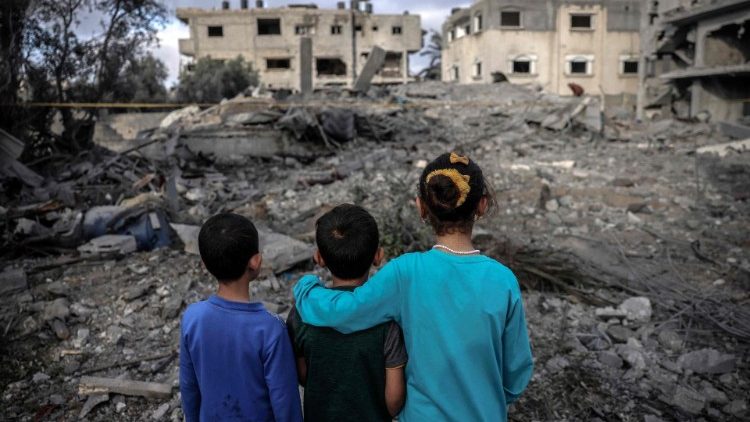Since October 7, the Gaza Strip has faced a severe humanitarian crisis, with devastating impacts on the education sector. More than 11,000 Palestinian students and 750 education center employees have been killed, and over 120 schools and universities have been destroyed. Israeli airstrikes have also injured thousands and displaced millions, exacerbating the ongoing conflict and causing widespread destruction of essential infrastructure, including healthcare, agriculture, and education.
The Toll on Education in Gaza
The education sector in Gaza has faced unprecedented destruction since the onset of Israeli airstrikes on October 7, 2023. According to the Palestinian Authority’s Information Office in Gaza, over 11,000 students have been killed in the relentless attacks, with thousands more injured. Educational centers have also been severely impacted, with 750 teachers and school staff members losing their lives.
Beyond the human cost, the physical infrastructure of Gaza’s education system has been decimated. Over 120 schools and universities have been completely destroyed, and an additional 340 educational institutions have sustained significant damage. These attacks have disrupted the education of more than 630,000 students, preventing them from returning to school and adding another layer of trauma to the already suffering population.
The Hamas movement has condemned the attacks on education, stating that these actions are an attempt to erase Palestinian identity and deny their national rights. Hamas argues that targeting the education sector is part of a broader effort by Israel to undermine Palestinian resilience, but they maintain that this will not succeed.
Civilian Casualties and Displacement
The ongoing Israeli military operations have resulted in a staggering loss of life and extensive displacement within Gaza. Since the conflict began, more than 40,000 Palestinians have been killed, according to Gaza’s Health Ministry. Of those identified, 52% are women and children, highlighting the disproportionately high civilian toll of the Israeli airstrikes.
In addition to the human losses, nearly all of Gaza’s 2.3 million residents have been displaced from their homes. The destruction of homes, schools, hospitals, and essential infrastructure has left large swaths of the population without access to basic necessities, such as food, water, and medical care. The World Food Programme (WFP) has declared that 2.2 million Palestinians in Gaza are in urgent need of food and livelihood assistance due to the ongoing conflict.
The blockade imposed by Israel has further exacerbated the crisis, cutting off access to essential goods and services. Gaza’s healthcare system is on the verge of collapse, and the destruction of agricultural land has sparked fears of an impending famine. The extensive damage to the territory’s infrastructure has left the population struggling for survival amid one of the most destructive bombing campaigns in recent history.
Historical Context of the Conflict
The conflict between Israel and Gaza is rooted in a long history of territorial disputes and political tensions. Since 1948, when the State of Israel was established, the Palestinian territories of the West Bank and Gaza Strip have been central to the Israeli-Palestinian conflict. Following Israel’s occupation of these territories in the 1967 Six-Day War, the region has experienced multiple uprisings, or intifadas, as Palestinians sought to end Israeli control.
In 2007, Hamas took control of the Gaza Strip, leading to a blockade imposed by Israel, citing security concerns. Since then, Gaza has faced significant economic hardship, with the blockade cutting off access to goods and services essential for survival. Human rights groups have repeatedly criticized the blockade as a form of collective punishment, contributing to the dire humanitarian situation in Gaza.
Over the years, several conflicts between Israel and Gaza-based militant groups, including Hamas, have erupted, with devastating consequences for the civilian population. The current war, which began on October 7, 2023, is the deadliest in the history of the Israeli-Palestinian conflict. The conflict escalated after a surprise attack by Hamas on Israel, which resulted in the deaths of 1,139 Israelis, including civilians and military personnel. In retaliation, Israel launched an extensive military campaign targeting Gaza, which has since caused widespread destruction and loss of life.
Regional and International Repercussions
The ongoing war between Israel and Gaza has sparked significant regional and international responses. Large protests, particularly pro-Palestinian demonstrations, have taken place worldwide, calling for an immediate ceasefire. The International Court of Justice is currently reviewing a case accusing Israel of committing genocide in Gaza, adding to the mounting international pressure on Israel to halt its military operations.
The conflict has also led to the involvement of other regional actors. The Axis of Resistance, a coalition of groups opposed to Israel, has engaged in military actions, including attacks on American military bases in the Middle East and strikes by Hezbollah, the Lebanese militia. The Yemeni Houthi movement has also launched attacks on ships allegedly linked to Israel, provoking a US-led military response.
While Israel continues to receive extensive military aid from the United States, the international community remains divided on how to address the conflict. The US has vetoed multiple UN Security Council ceasefire resolutions, complicating efforts to bring an end to the violence.
Conclusion: A Call for International Action
The humanitarian crisis in Gaza continues to worsen as the Israeli military campaign intensifies. With thousands of civilians dead, millions displaced, and essential infrastructure destroyed, the international community faces increasing pressure to intervene. The destruction of Gaza’s education sector, in particular, raises grave concerns about the long-term consequences of the conflict for future generations of Palestinians. The situation calls for an urgent ceasefire and a concerted effort to provide humanitarian aid to the people of Gaza.


